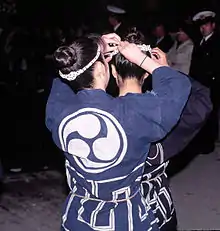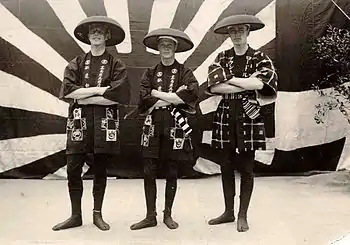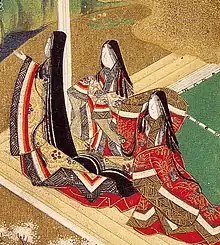Happi
A happi (法被/半被) is a traditional tube-sleeved Japanese coat, usually worn only during festivals. Happi typically feature symbols and/or text on the lapels, with a larger design on the back of the coat, typically the name or the festival or the participating association; the kanji for festival ('祭り', "matsuri") may also be present.


Originally worn to outwardly display of the mon, or crest, of a family, happi were worn by house servants as a uniform. Firefighters also wore happi coats, with the crest on the back of the coat displaying the group with which they were associated;[1] these were distinct from the hikeshi sashiko banten (lit., "embroidered fireman's jacket") also worn by firefighters, constructed from heavily-quilted cotton layers designed to hold a large quantity of water and thus protect the wearer.
In English, happi is most often translated as "happi coat" or "happy coat". Happi are typically blue, with designs in red, black and white, though variations with a number of different colours are also seen in modern day Japan. Modern happi coats may be made of cotton or polyester fabrics.
References
- Drazen, Patrick. Anime explosion!: the what? why? & wow! of Japanese animation. Stone Bridge Press, 2003. ISBN 1-880656-72-8. Page 322. "In time, these groups of fire-fighters, adopting uniforms consisting of the short jackets called happi emblazoned with the mon (crest) of the particular group, so that one gang could be distinguished from another."

